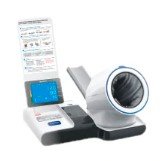Assessing the Nutritional Status of Breastfeeding Mothers and Infants: Tests and Importance
Summary
- Assessing the nutritional status of breastfeeding mothers and infants is crucial for their overall health and well-being.
- Medical labs perform a variety of tests to evaluate the nutritional status of breastfeeding mothers and infants.
- These tests include measuring nutrient levels, assessing growth and development, and identifying any deficiencies or abnormalities.
Introduction
Assessing the nutritional status of breastfeeding mothers and infants is essential to ensure their optimal health and development. Medical labs play a crucial role in this process by performing various tests to evaluate the nutrient levels and overall well-being of both mothers and infants. In this article, we will explore the specific tests that are conducted in medical labs to assess the nutritional status of breastfeeding mothers and infants in the United States.
Tests for Assessing Nutritional Status
1. Nutrient Levels
One of the primary tests performed in medical labs to assess the nutritional status of breastfeeding mothers and infants is measuring nutrient levels in the body. This includes testing for essential vitamins, minerals, and other nutrients that are vital for overall health and well-being.
- Vitamin D levels
- Iron levels
- Folate levels
2. Growth and Development
Another important aspect of evaluating the nutritional status of breastfeeding mothers and infants is assessing their growth and development. Medical labs conduct tests to monitor the physical growth, cognitive development, and overall well-being of both mothers and infants.
- Weight and height measurements
- Head circumference measurements for infants
- Developmental milestones assessment
3. Deficiencies and Abnormalities
In addition to measuring nutrient levels and monitoring growth and development, medical labs also identify any deficiencies or abnormalities that may impact the nutritional status of breastfeeding mothers and infants. These tests help Healthcare Providers to address any underlying issues and provide necessary interventions.
- Anemia screening
- Thyroid function tests
- Cholesterol levels
Importance of Nutritional Assessment
Assessing the nutritional status of breastfeeding mothers and infants is crucial for several reasons:
- Optimal growth and development
- Prevention of nutrient deficiencies
- Early detection of health issues
Conclusion
In conclusion, medical labs play a vital role in assessing the nutritional status of breastfeeding mothers and infants through a variety of tests. By measuring nutrient levels, monitoring growth and development, and identifying deficiencies or abnormalities, Healthcare Providers can ensure the optimal health and well-being of both mothers and infants. It is essential for Healthcare Providers to collaborate with medical labs to conduct these tests and interpret the results accurately for effective interventions and improved outcomes.

Disclaimer: The content provided on this blog is for informational purposes only, reflecting the personal opinions and insights of the author(s) on the topics. The information provided should not be used for diagnosing or treating a health problem or disease, and those seeking personal medical advice should consult with a licensed physician. Always seek the advice of your doctor or other qualified health provider regarding a medical condition. Never disregard professional medical advice or delay in seeking it because of something you have read on this website. If you think you may have a medical emergency, call 911 or go to the nearest emergency room immediately. No physician-patient relationship is created by this web site or its use. No contributors to this web site make any representations, express or implied, with respect to the information provided herein or to its use. While we strive to share accurate and up-to-date information, we cannot guarantee the completeness, reliability, or accuracy of the content. The blog may also include links to external websites and resources for the convenience of our readers. Please note that linking to other sites does not imply endorsement of their content, practices, or services by us. Readers should use their discretion and judgment while exploring any external links and resources mentioned on this blog.
